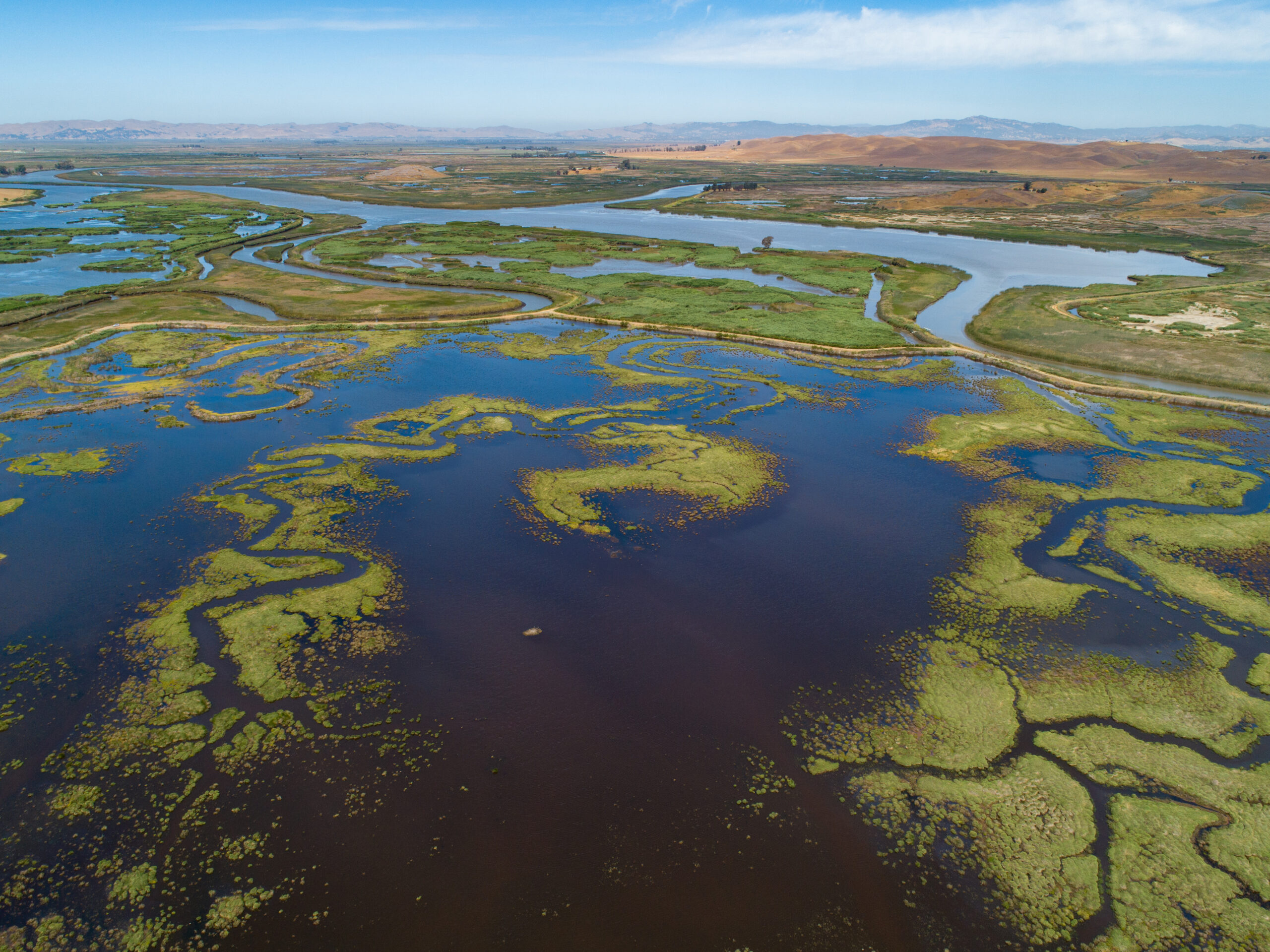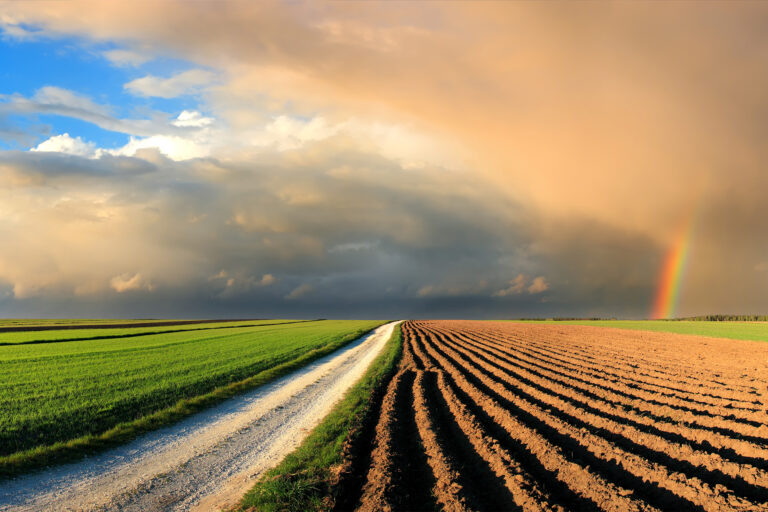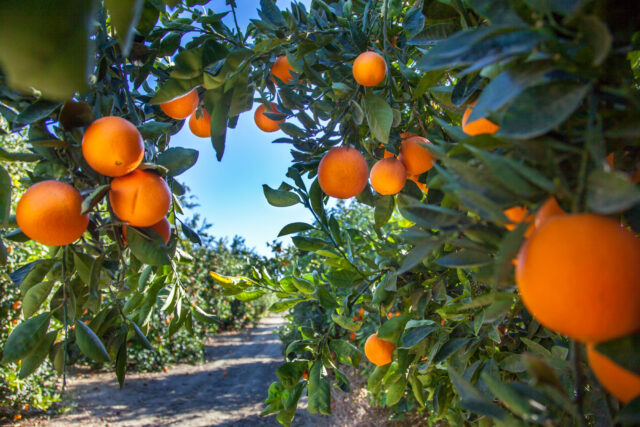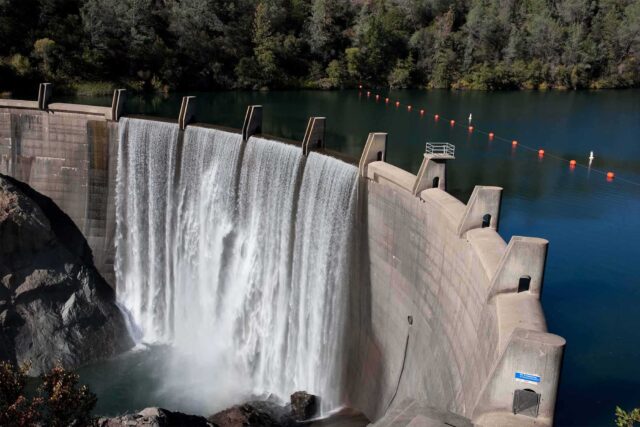Introduction

In the last decade, California—along with the rest of the world—has entered a new phase of climate change. The changes that scientists predicted have started to arrive. California’s already variable climate is growing increasingly volatile and unpredictable: The dry periods are hotter and drier, and the wet periods—lately too few and far between—are warmer and often more intense.
Across the state, water and land managers are being forced to respond in real time to changes that were once hard to imagine. The snowpack—that once-reliable annual source of water—is diminishing as temperatures rise. Water withdrawals during multiyear droughts are depleting the state’s reservoirs and groundwater basins. Hundreds of thousands of acres of farmland come out of production during droughts; further reductions will be needed to restore our groundwater basins to balance. And mammoth floods could eventually devastate our currently parched state. Warming is also intensifying water quality problems, such as harmful algal blooms. These changes are posing widespread challenges for our businesses, communities, and ecosystems—and often hitting low-income residents the hardest.
This report considers the state of water in California: What changes are we seeing now, and what should we expect in the near future? Then it examines how these climate shifts will impact urban and rural communities, agriculture, and the environment. Finally, it explores wet-year strategies that will help Californians get through the dry years.
The challenges are real, but there is reason for hope. California still possesses an abundance of resources, both natural and human. It’s a global center of innovation and an agricultural powerhouse. California is also a renewable energy leader with massive growth potential. And the state has proven that it’s capable of passing big reforms to address major problems, from groundwater overdraft to climate change. Californians have the will to confront these crises, and the funding to take action. In short, we have all the tools to thrive, even in this unpredictable—and at times nearly unrecognizable—climate.
The moment to sound the alarm has passed. It’s time now to accept what’s happening and roll up our sleeves. We must put all our resources into responding calmly, with data and a clear goal: To protect people and the environment from the worst impacts of our changing climate. California is not just an example to the nation, it’s a global player: Others follow where we lead. And how we handle this new reality will have global repercussions. We can model how to manage uncertainty while keeping equity at the forefront of our planning efforts. We can show that the Golden State can continue to thrive by embracing innovations—and broad-based partnerships across sectors and regions—that allow us to do more with less.
—Ellen Hanak
Director, PPIC Water Policy Center
Continuing Change
As California’s climate changes, policy and regulatory frameworks must move quickly to keep up:
Warmer, drier conditions reveal weaknesses in supply systems: There is growing scientific consensus that conditions have changed, making droughts more intense. Over the past two years, low rainfall, warming, an increasingly thirsty atmosphere, and losses in snowpack have broken two of our most important water supply systems, causing hardship across California. In 2021, all runoff in the Delta watershed was used either upstream of the Delta (85%) or within the Delta (15%), leaving nothing for managing water quality or the environment. To avert a crisis, meager supplies in state and federal reservoirs were drawn down, water quality standards were relaxed, and rock barriers were installed in the Delta to keep salinity at bay. And following more than two decades of “megadrought” in the Colorado Basin, reservoir levels are so low that near-term supply cuts are likely. Finally, many rivers, lakes, and estuaries are being impacted by declining water quality, including increases in harmful algal blooms.
But big policy and regulatory changes are underway: The state has adopted plans to improve supply reliability—including the governor’s new Water Supply Strategy—while continuing to move forward on implementing the Sustainable Groundwater Management Act (SGMA) and supplying water to rural communities impacted by drought. The State Water Board—having learned key lessons from the last drought—has become more nimble at ordering cutbacks in times of shortage. The state continues to update water quality and flow standards for the Delta watershed, and to negotiate draft voluntary agreements to meet environmental objectives. The federal government is prompting Colorado River users to take urgent efforts to reduce demand. State–federal cooperation on water management has also been increasing, including for operations of two large water projects: the Central Valley Project (CVP) and the State Water Project (SWP).
And funding is starting to appear: Responding to changing conditions will require significant and sustained funding. The federal Bipartisan Infrastructure Law allocated $3.5 billion to improve water infrastructure in California, with an emphasis on underserved communities, along with $8 billion for western water infrastructure. The Inflation Reduction Act provides another $4 billion to support western drought management. And over the past three years the state legislature has authorized more than $8 billion to improve water supply and river and wetland ecosystems.
Still, we must learn to thrive with less: Changes in policy and regulation, along with increased funding, are all positive steps in adapting to rapid drought intensification. But even if we do everything right, water supplies are likely to decline. This is the elephant in the room. The grand challenge for 21st-century water management in California is learning how to thrive with less.
Water for Communities

Reliable, safe, and affordable water supplies are essential for the well-being of communities throughout California and the economic activity they support. But the local and regional utilities that provide water for these communities—both urban and rural—face some significant challenges in procuring these supplies. These challenges are not equal everywhere.
The state’s communities are using roughly the same amount of water as in the late 1980s, despite growing by more than 10 million residents. Per-capita water use has declined over time, thanks to water-saving indoor plumbing fixtures and appliances, better leak detection, and, more recently, efforts to reduce outdoor water use with less thirsty landscaping and more efficient irrigation systems. These long-term conservation measures help make the most of available water. Continued progress is still possible in many communities—especially for outdoor water use—and will be even more important if available supplies decline in the future.
During droughts, utilities often call on their customers to save additional water to help manage shortages. Efforts to encourage such reductions have varied across the state during the current drought, reflecting differences in local supply conditions. And while conservation is becoming a way of life in California’s communities, it is not enough to rely solely on conservation to meet demand. Unless they can tap alternative sources of supplies, communities that have already attained low levels of per-capita use are more vulnerable during droughts, because they have less flexibility to further reduce water use.
– Clifford Chan, East Bay Municipal Utilities District
It is essential for California’s economy and well-being that urban and rural communities increase the resilience of their supplies. This will involve a portfolio of actions along with unprecedented regional cooperation. Urban communities will need to continue their efforts to manage long-term demand while making significant investments in supplies, including building more interconnections with other communities, new surface and underground storage, new reuse and recycling projects, and more stormwater capture systems. Ongoing investments will also be essential to protect water quality.
– Ryan Jensen, Community Water Center
The state also needs to redouble its efforts to provide reliable, safe supplies to underserved rural communities that rely on small water utilities or domestic wells. Utility consolidation and connection with other water systems can help in many places, as can support for upgrades of domestic wells and joint investments in new supplies. And local governments, with help from the state, need to accelerate the implementation of SGMA sustainability plans to protect water supplies for rural communities from increasing drought intensity. Finally, addressing affordability concerns for low-income Californians must be an ongoing priority in both urban and rural settings.
Water for Agriculture
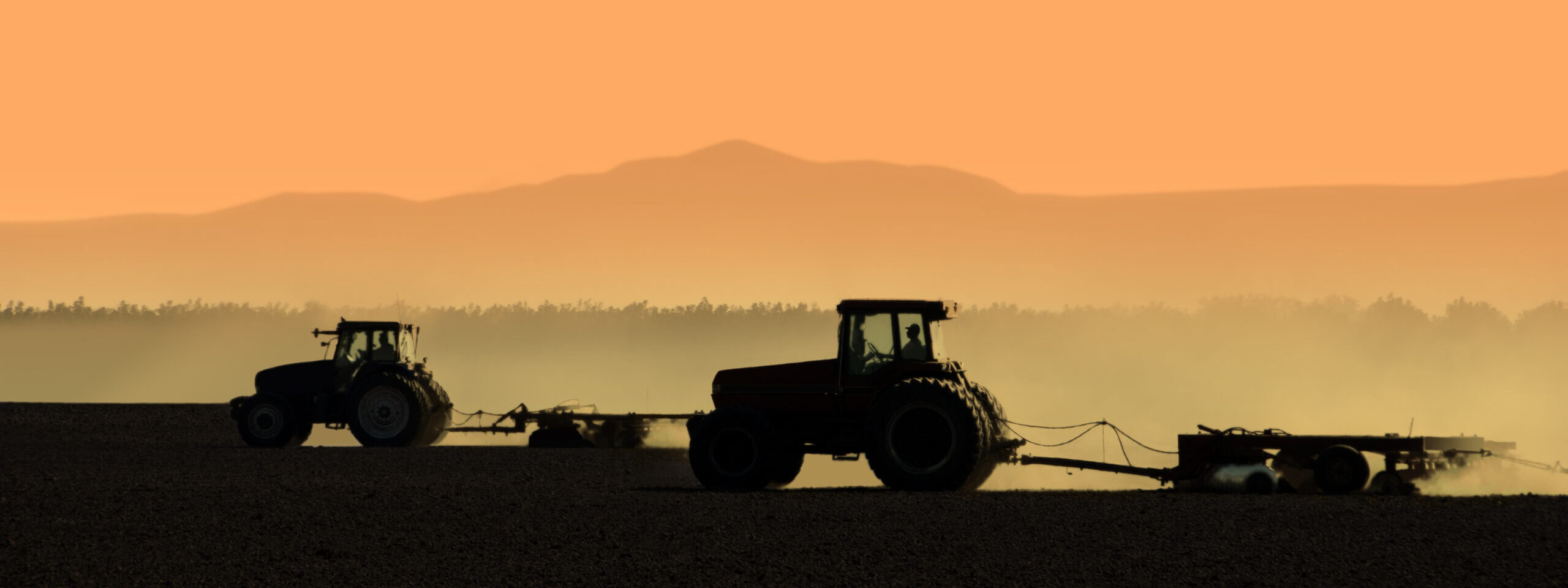
Agriculture faces a unique challenge in adapting to the declining reliability of water supplies. California is the nation’s agricultural powerhouse, accounting for 12 percent of agricultural production in 2021—including more than 70 percent of the nation’s fruits and nuts. This sector produces annual revenues of more than $50 billion, employs more than 420,000 people, and supports large food and beverage processing industries. But California agriculture wouldn’t exist without the elaborate network of surface water and groundwater supplies needed for irrigation.
– Nicole Montna Van Vleck, Montna Farms
During severe droughts, farmers reduce irrigated acreage—last year, they fallowed about 400,000 acres (about 6% of 2018 acreage), and this year that number will be considerably higher. Where possible, farmers also pump additional groundwater to make up for lower surface supplies. This pumping keeps cropland in production, but it also aggravates a longer-term challenge for many groundwater basins: For decades, farming regions like the San Joaquin Valley and the Central Coast have been relying on unsustainable groundwater pumping to meet demands. SGMA—the groundwater sustainability law enacted in 2014—is designed to bring overpumping to an end by the early 2040s.
As earlier PPIC studies have shown, the San Joaquin Valley—the state’s largest farming region—has been overdrafting groundwater by close to 2 million acre-feet annually, or roughly 10 percent of current use. Achieving sustainability will require both demand reduction and supply augmentation. Even with new supply investments, at least 500,000 acres of land will likely need to come out of intensively irrigated production on a long-term basis.
– Reyn Akiona, Tule Subbasin
The challenge of meeting SGMA requirements is compounded by projected climate-related declines in available water supplies. Warmer, drier droughts make it harder to recharge groundwater basins, increasing pressure to reduce demands through land fallowing. There is also great uncertainty over future water availability due to several ongoing regulatory processes, including the update of the Bay-Delta water quality control plan and the reconsultation over the long-term coordinated operations of the CVP and SWP. And with severe shortages on the Colorado River, farmers in Imperial County—who hold some of the most senior water rights in the basin—are being called on to reduce their use.
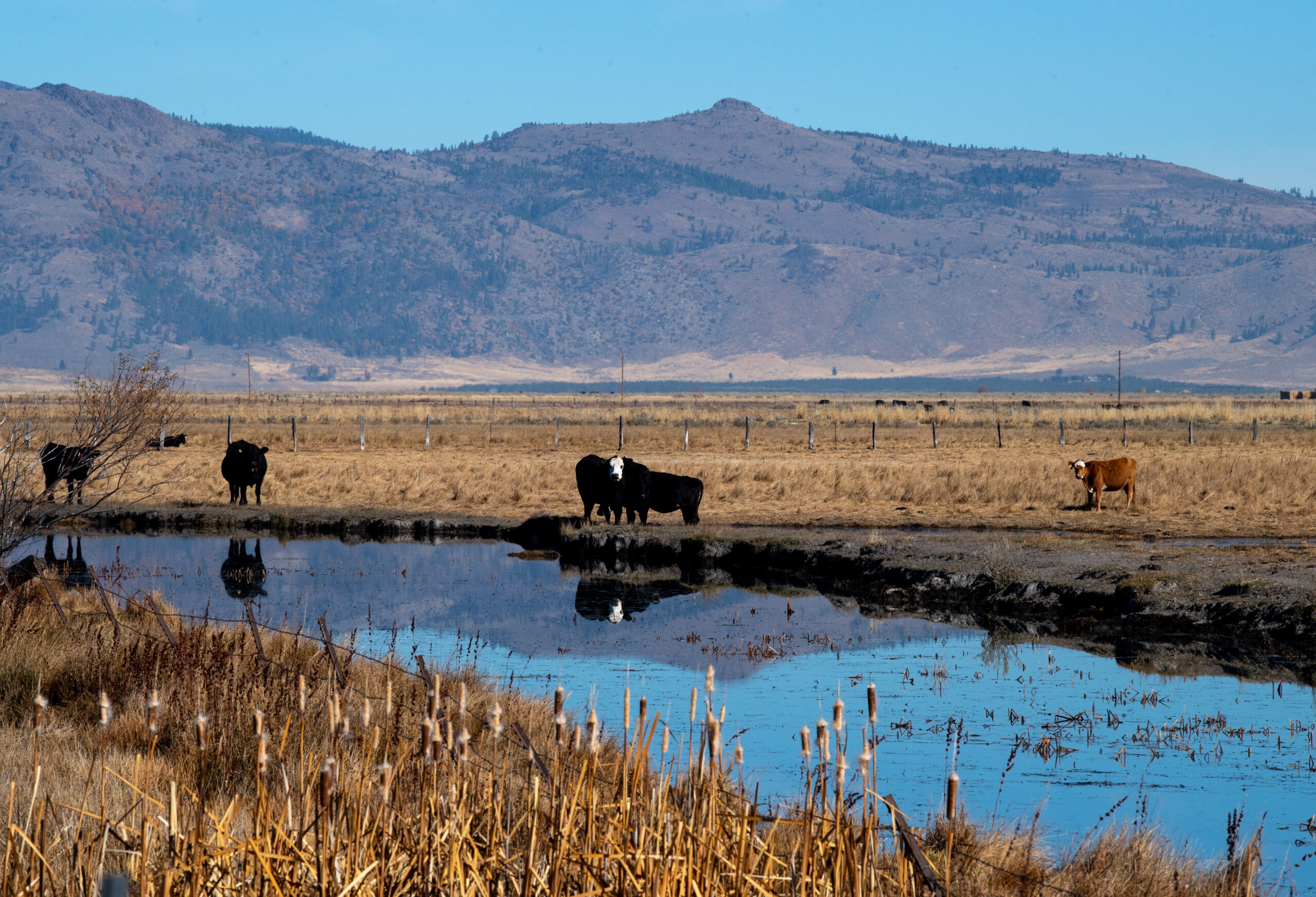
All trends point toward a reduction in irrigated agriculture in California over the next few decades as water use comes into balance with water availability. Our earlier research has shown that there are ways to soften the economic and social impacts for agriculture and regional economies through water trading to put water on the most economically productive lands; groundwater banking to manage risks; and investing in new surface and underground storage and conveyance to augment supplies, including through partnerships with urban areas. Strategic land repurposing can also reduce the economic and environmental costs of land fallowing, like increased dust. This will entail encouraging growers to shift some lands to alternative uses, such as water-limited farming and grazing, wildlife habitat, and solar farms. These actions will require unprecedented coordination and integration, along with incentives for growers and social safety net investments to support transitions in impacted communities. State and federal funding will surely help.
– Don Cameron, Terranova Ranch and California Board of Food and Agriculture
But it is important to dispel a common myth. There will be no “end to agriculture” as some have envisioned; the agricultural industry and the communities it supports can continue to thrive. Even with these reductions in available water and the associated decrease in irrigated farmland, California will continue to be the nation’s most productive agricultural state. (The closest behind is Iowa, with $35 billion in production in 2021.) California’s farmers have shown an extraordinary capacity for adaptation to changes in prices, technology, and the regulatory environment. This will continue into the indefinite future, even though the total footprint of irrigated agriculture is likely to shrink.
Water for the Environment
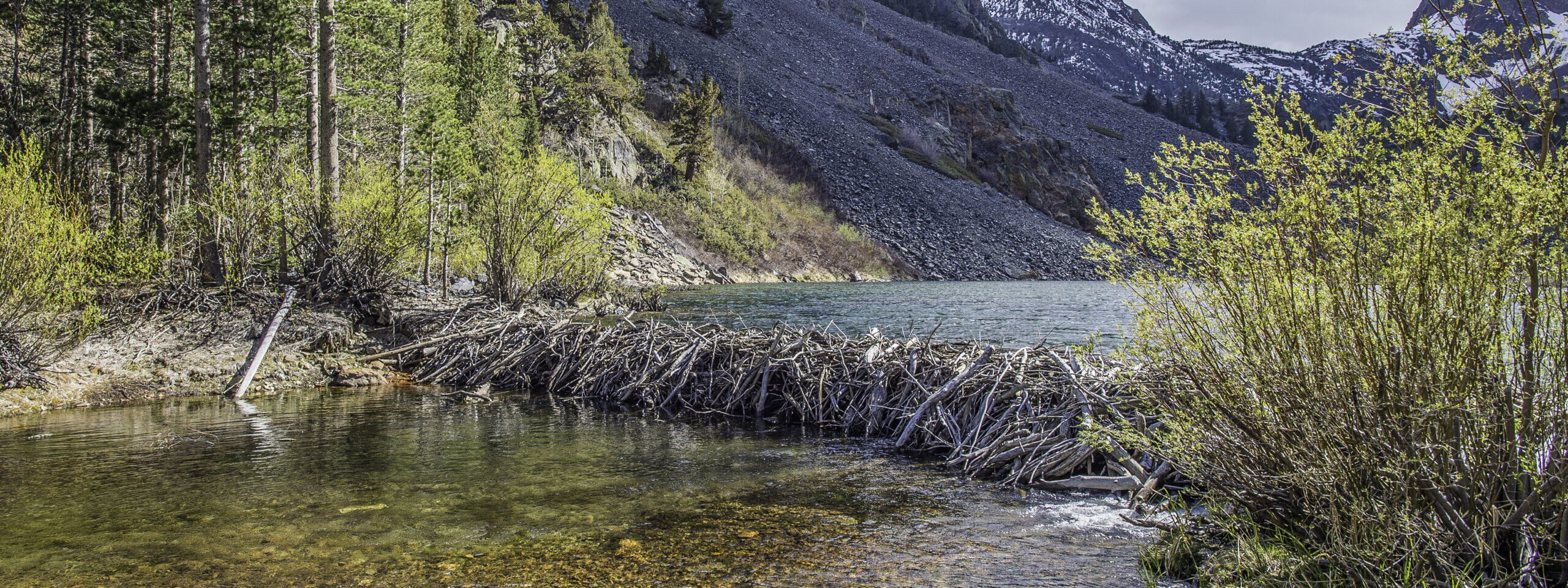
California’s freshwater biodiversity has been declining for decades, along with overall ecosystem health. Reduced runoff and increases in temperature are making matters worse. Fish and wildlife populations that are in poor shape tend to be less resilient to increasing drought intensity, struggling to survive drought and recover when wet years return. And drought can lead to fundamental changes in ecosystem conditions as temperatures increase, water quality declines, and non-native species take hold. These factors have likely played a major role in the decline of the Sacramento–San Joaquin Delta.
– Jeanne Brantigan, The Nature Conservancy
Despite years of regulation and substantial investments, more than 80 percent of native freshwater fishes are in decline and almost half the runs of steelhead and salmon are facing extinction by the end of the century. For several species, extinction appears imminent. The challenge in reversing species declines is related to the many factors that contribute to ecosystem degradation—including land use changes, loss of physical habitat, poor fisheries and hatchery management, discharges of pollutants, and the introduction of invasive species. But it is the way we manage water—an essential ingredient for freshwater ecosystem health—that is the most contentious subject.
The current approach to environmental water management emphasizes minimum flow and water quality standards to meet the needs of fish protected by state and federal endangered species acts. This single-species focus tends to overlook the needs of the broader ecosystem and fails to acknowledge that healthy ecosystems provide an array of benefits for people—supporting recreation and cultural values, sustaining commercial and subsistence fishing, and serving as important natural infrastructure to manage floods, recharge groundwater, and improve water quality.
– Letitia Grenier, San Francisco Estuary Institute
The current approach also establishes the environment as a constraint on water management operations, rather than a principal management objective like water supply, hydropower, and flood control. Furthermore, rivers and streams that don’t support listed species are often left unprotected.
California needs a change in course on ecosystem management to adapt to rapidly changing conditions. Ecosystem health needs to become an explicit objective of water management, rather than merely a constraint. This approach—often referred to as ecosystem-based management—integrates the environment into all phases of decision-making, effectively giving the environment a seat at the table. It also increases flexibility in how and when water is used (e.g., allocating environmental water as “functional flows” to get the most ecosystem benefit), while allowing other users to plan accordingly and with greater certainty. Making this work may require establishing assets for the environment—such as water budgets, reservoir storage space, and funding to restore physical habitat—that can be flexibly used to adapt to changing conditions.
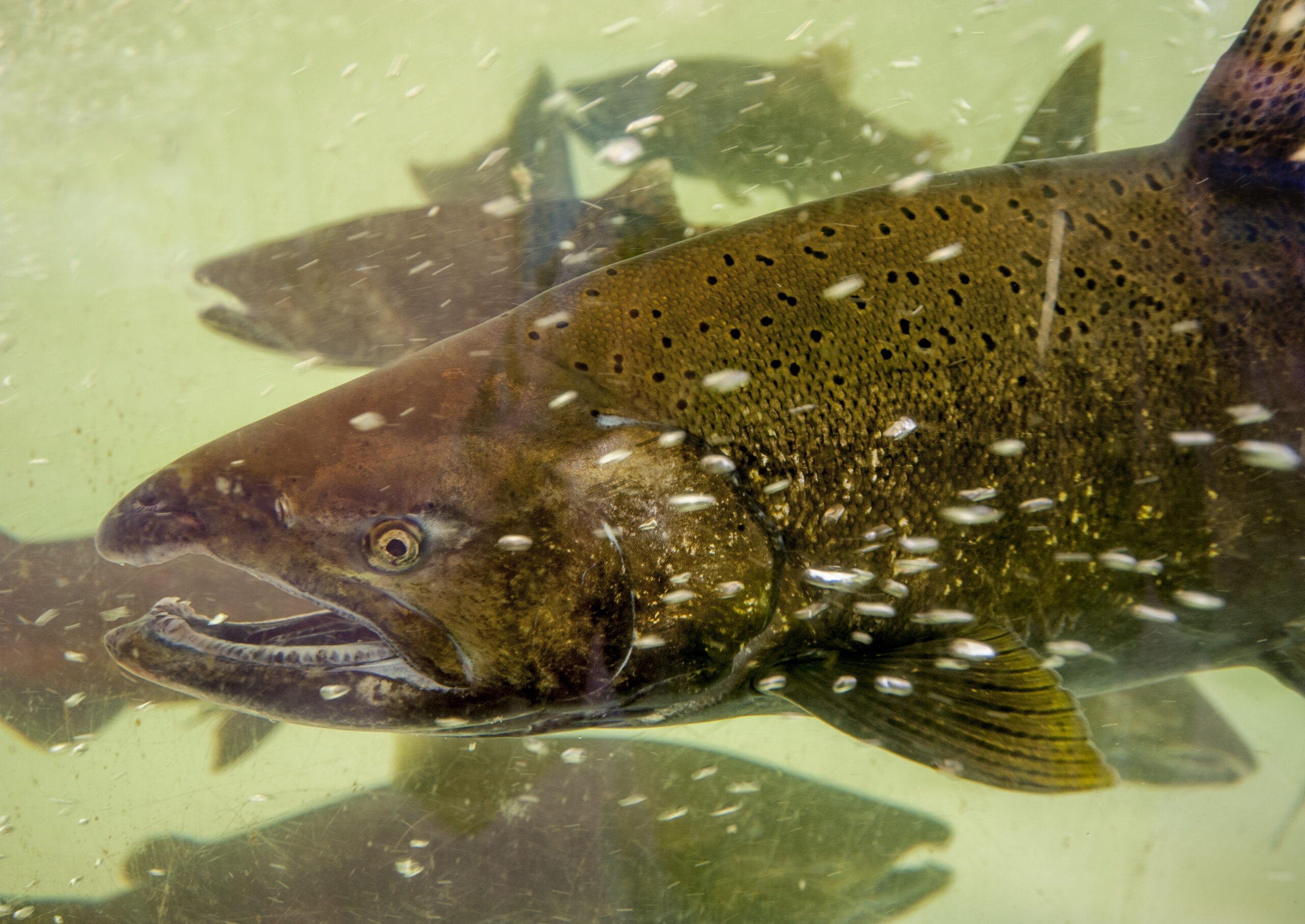
– Julie Rentner, River Partners
The most difficult impediment to adopting this strategy, however, will be setting priorities. Conditions are changing fast, and the state needs to articulate the most important and immediate actions required to preserve biodiversity and build drought resilience for freshwater ecosystems. This should include designating specific areas for concentrated investments (e.g., biodiversity hotspots and population strongholds), rebuilding resilience where possible, and conserving climate refugia (areas naturally buffered from climate change). Accelerating the pace and scale of physical habitat improvements through more nimble permitting is also vital. This year’s statewide Programmatic Biological Opinion for restoration programs is a major step in the right direction.
The extensive portfolio of actions provided in the governor’s Water Supply Strategy left the environment out, stating only the desire to not cause additional harm. This approach is no longer sufficient. Water supplies for the environment—and the multiple benefits provided by healthy ecosystems—should be the third leg of this strategy, along with water for communities and farms. And the state needs a strategy to help ecosystems—California’s vital natural infrastructure—adapt to the impacts of warming and drying.
Wet-Year Strategies
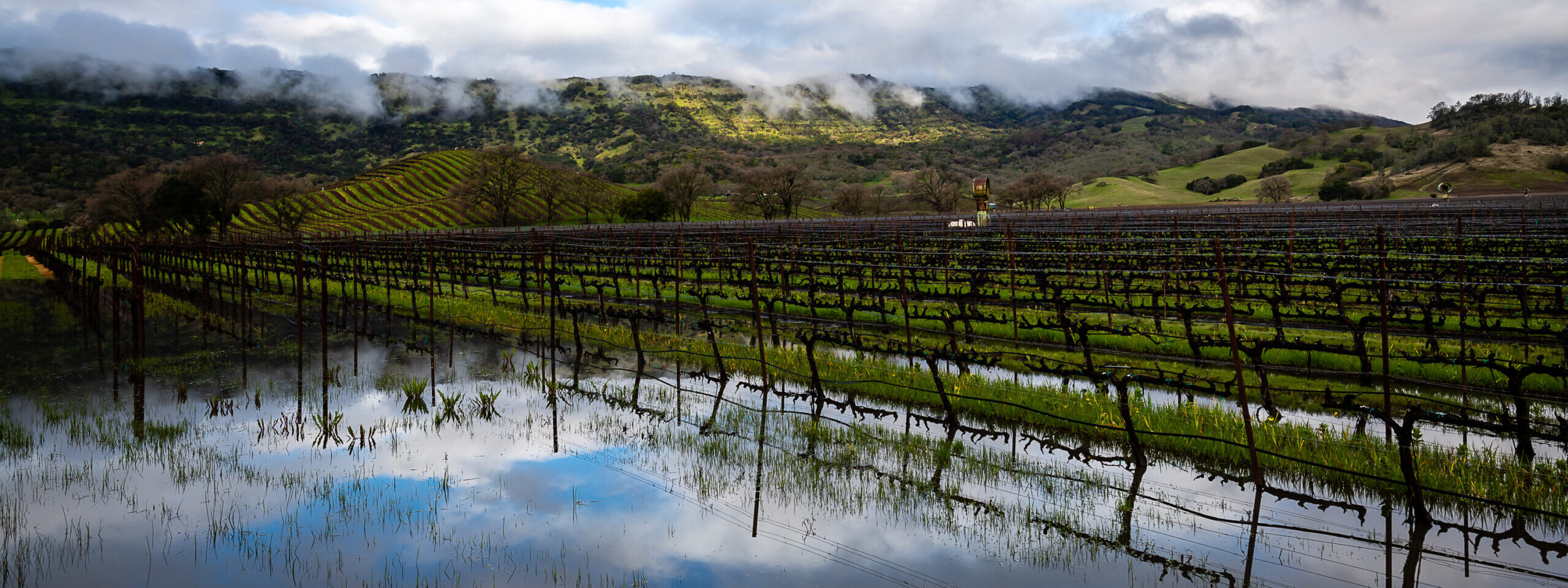
During drought, it is easy to forget that California also has wet years and occasionally very large, damaging floods. Indeed, even in dry years there are often large storms. Climate models do not project a California that is in a permanent state of drought: Rather, the state will continue to experience wet and dry periods. But drought intensity and storm intensity are both increasing, which is likely a signature of climate warming.
– Joe Hopkins, Aliso Water District
The shift to drier dry years and wetter wet years makes it imperative that all of California’s water systems develop comprehensive wet-year strategies that take full advantage of times of abundance, while also ensuring public safety from floods. For urban areas, this means doing a better job of capturing and storing storm runoff. Farms should maximize groundwater recharge—and do so, where possible, in places that also boost supplies for rural communities and do not harm water quality. And for freshwater ecosystems, wet years are essential for recovering from drought and key to building drought resilience.
– Karla Nemeth, California Department of Water Resources
The state is making important strides in this regard. Flood-managed aquifer recharge on farms is gaining considerable momentum, particularly in the San Joaquin Valley. The seven Proposition 1 Water Storage Investment Program projects are all focused on storing water during wet periods, with a portion going to augment environmental flows when it’s dry. There is growing interest in making major investments in conveyance infrastructure for recharge and establishing groundwater banks. Cities—particularly in the South Coast—are developing new stormwater capture systems. And reservoir operators are using new forecasting models to better manage the trade-offs between flood protection and water supply during storms.
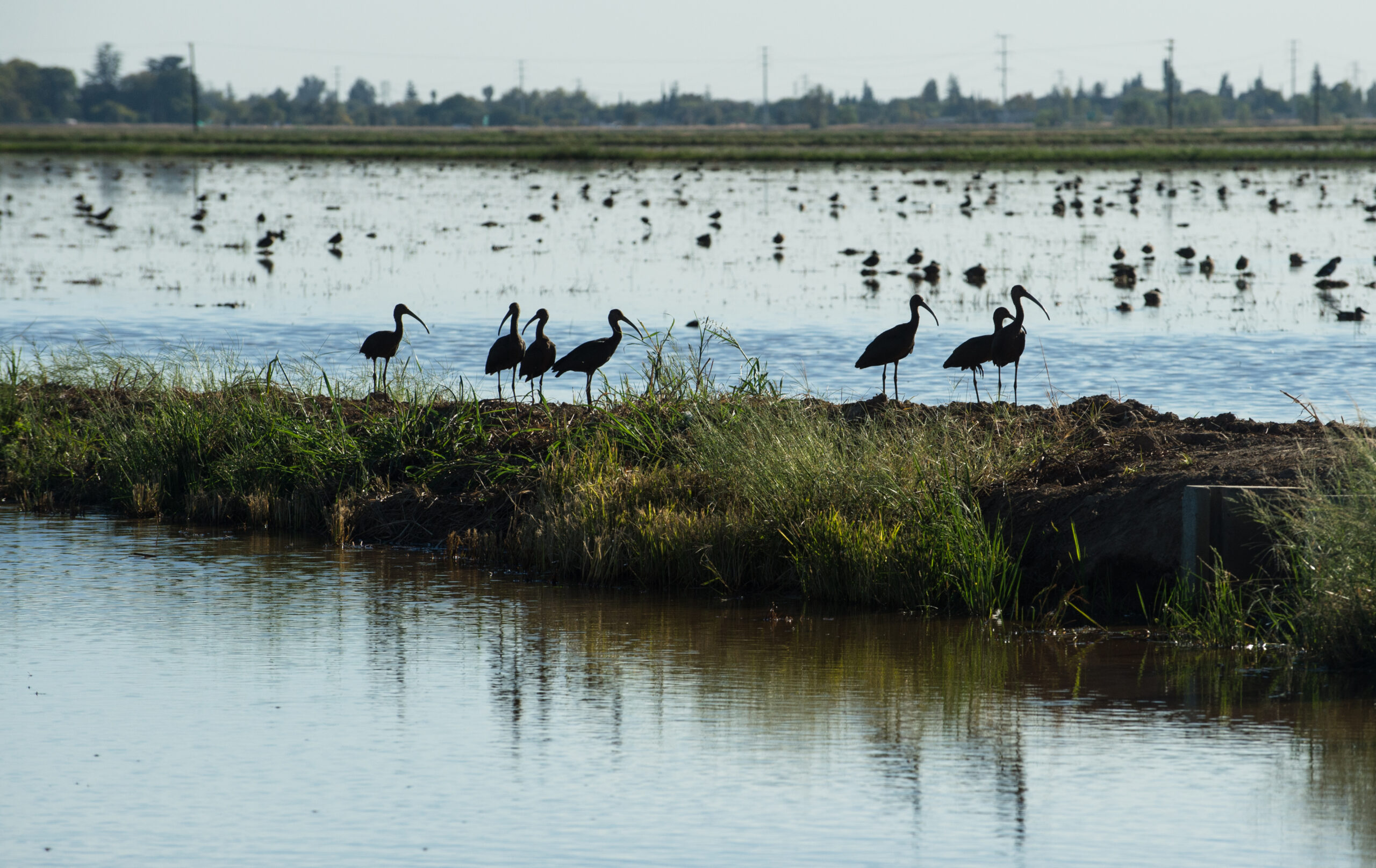
Despite this progress, there are some important cautions here. More work is needed on how and when to store wet-year water in ways that benefit the environment and do not harm other water users. A related question to resolve is: Who pays for this stored water, and who has a right to its use? Fortunately, California already has some very good models for how to do this through existing groundwater banks; it will be key to develop strong accounting and monitoring systems in places that currently lack them.
– Susan Tatayon, former chair, Delta Stewardship Council
Finally, there was a healthy reminder this year—much in the news—that the climate-driven abundance of water in wet years is a double-edged sword. Updates of climate projections show a steady increase in the intensity of atmospheric rivers, our flood-generating storms. While this is great for water supply, it increases the risk of severe, life-threatening floods. Modeling suggests that extreme regional floods—like the floods of 1861–62 that inundated most of the Central Valley and Southern California—are becoming more likely. If those floods were to occur today, they would result in approximately $1 trillion in damages (in today’s dollars), dwarfing damages from even the most severe earthquakes.
Comprehensive wet-year strategies—which integrate water supply, environmental management, and flood-risk reduction objectives—are just as important as drought management strategies if we are to successfully adapt to increasing water scarcity. Indeed, the actions we take (or fail to take) during wet years sow the seeds for our successes (or our challenges) during drought.
Conclusion
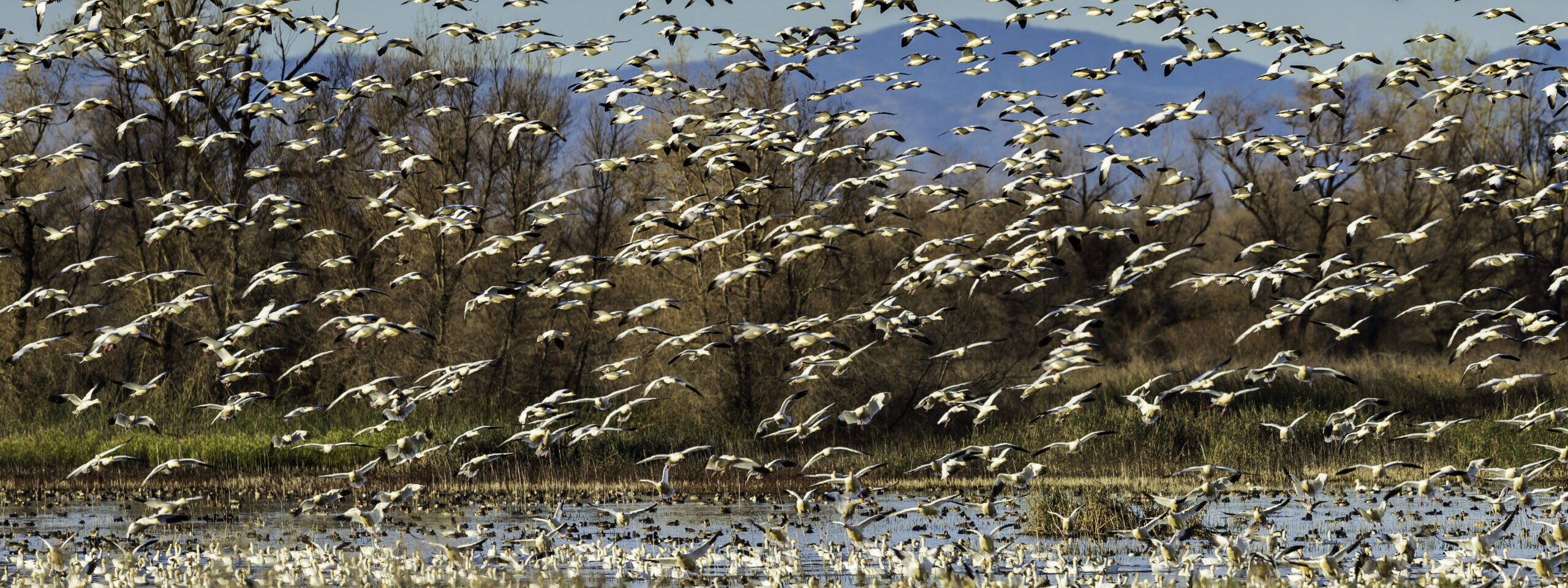
Most Californians are a bit burned out by drought. The relentless dry days and record warm temperatures are wearying. But we know now that we must adapt to these warmer, drier conditions. Although there will be wet years again, the increase in drought intensity is here to stay.
The fundamental challenge is to shift our traditional focus on expanding supplies toward a different lens: How to thrive with less.
– Adel Hagekhalil, Metropolitan Water District of Southern California
In our communities, conservation is becoming a way of life. But we must do much more to build drought resilience. This includes making more investments in supply reliability, including diversifying sources; improving the capacity to store and trade water; and capturing storm runoff—all while continuing to promote increases in water use efficiency. Policymakers and managers at all levels—federal, state, and local—must continue to emphasize equity and building the reliability of safe water supplies for small and underserved communities.
For the farms that make California an agricultural powerhouse, the future is clear: The footprint of irrigated agriculture is shrinking and will continue to do so until it comes into balance with sustainable water supplies. Yet all indications suggest that agriculture will continue to thrive—albeit with less—if there is a strong commitment to reducing the social, economic, and environmental effects of land retirement. This will involve repurposing land—rather than abandoning it—while expanding water markets and trading, groundwater recharge and banking, and new infrastructure to facilitate these activities. Most of all, it will require unprecedented regional cooperation to succeed, along with state and federal regulatory and financial support.

– Raul Barraza, Jr., Arvin Community Services District
Natural infrastructure—our freshwater ecosystems—is under great threat from increasing drought intensity. And the rancorous battles over water for the environment will only grow unless there is a change of course. California needs to commit to making environmental health a principal objective of water management, not merely a constraint. And ecological drought resilience should be priority number one, including improving water quality and setting aside assets for the environment—water, land, and money—that can be flexibly managed to cope with rapidly changing conditions.

– Joone Lopez, Moulton-Niguel Water District
Finally, it is vital that wet-year management for communities, farms, and the environment be as robust as our efforts at dry-year management. Coordinated and integrated statewide, regional, and local action will allow us to develop plans for capturing and storing water in wet periods so that it can soften the harm of dry periods. As with all other water management challenges, cooperation is key. Thriving with less involves thriving together.
